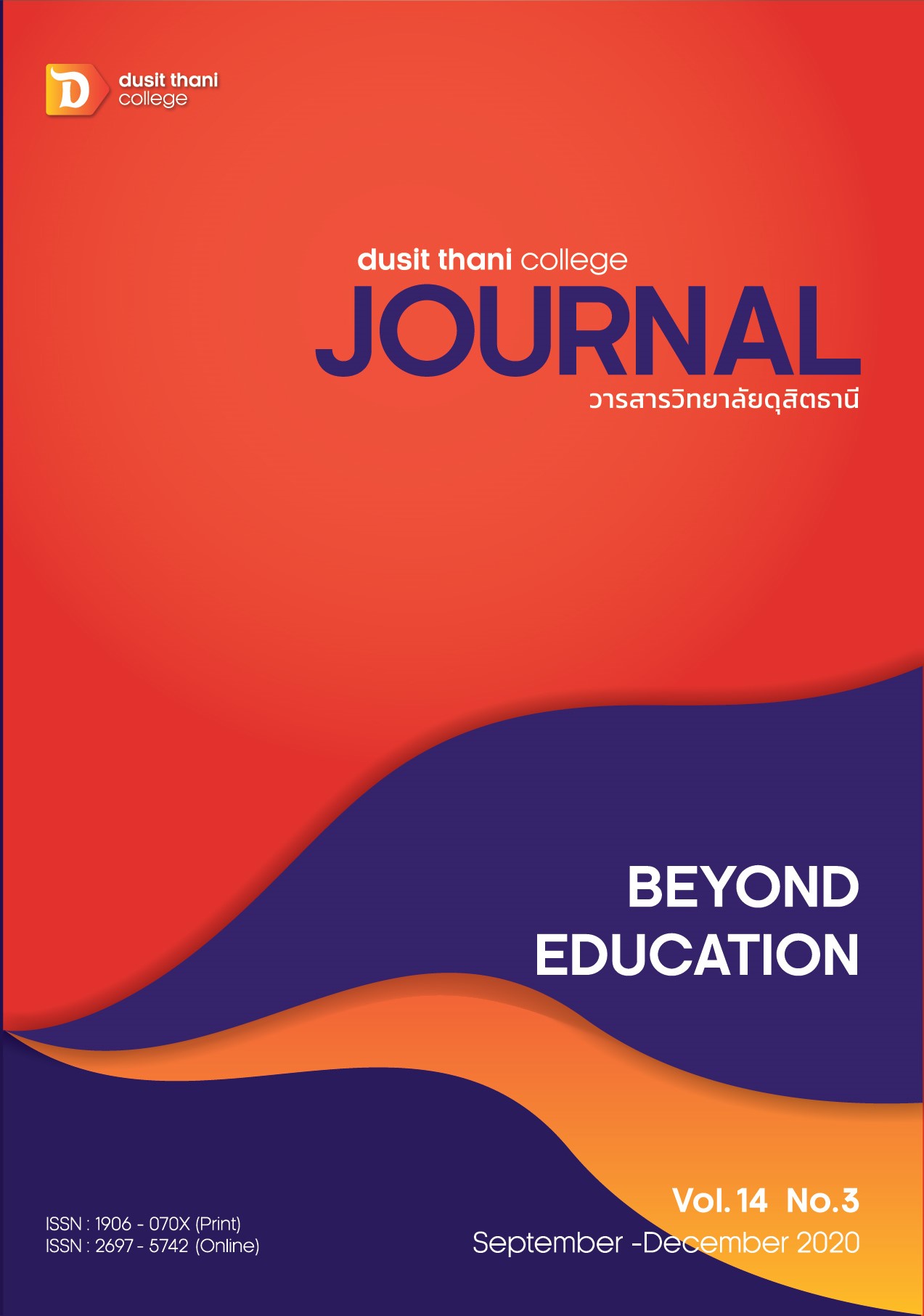Behavior, Perception and Attitude of Consumers on Korean Wave
Main Article Content
Abstract
The purposes of this research aimed 1) to study consumers behavior towards products and using the service about Korean wave. 2) to study consumers attitudes toward Korean wave. 3) to study the perceptions that affected the attitudes of consumers according to the Korean wave. 4) to compare the behavior towards consumption habits according to the Korean wave. The data were collected by questionnaires a tool there was a total of 402 consumers. The data was analyzed by descriptive statistics and One-way ANOVA.
The results of this research revealed (1) most consumers were female, and aged between 23-25 years old, most of them were students with the bachelor’s degrees as their highest education level. The largest portion of the consumers were single with the monthly income less than 10,000 baht. (2) Consumer behavior towards products and using the service according to the Korean trend, found that the sample was interested in using consumer goods and consume products according to the Korean wave. There were a selection of products according to the Korean wave online, had a budget to bought products souvenir products And entertainment media following the Korean popular trend on average per month 501-1,000 baht with a reason to bought consumer goods and consume according to the Korean wave because of personal satisfaction which consumer products that consumers like to buy according to the Korean trend, the most popular are related to artists and souvenirs, most consumers are aware of the trend of Korean popular from the Internet and online media and people who influence teenagers in consuming products, most are artists, celebrities. (3) The sample group can get to know product information via twitter is the main. (4) Consumer attitudes according to Korean popular trend overall is at a high level, considering in each aspect, it was found that consumers had the attitudes of the clothes at the high level, followed by the cosmetics and technology, respectively. (5) The test of the hypothesis test found that the behavior and perceptions of consumers according to the Korean wave were different the attitudes towards the Korean wave were different with the perceived behavior that affects the attitudes of using the Korean wave differently.
Article Details
Article Screening Policy
- All research and academic articles to be published must be considered and screened by three peer reviews in the relevant field / article.
- All articles, texts, illustrations and tables published in the journal are the personal opinions of the authors. Editors don't always have to agree. And no responsibility whatsoever is the sole responsibility of the author.
- The articles to be published must never be published. Where did you first publish? And not in the consideration of other journals If the audit found that there has been a duplicate publication It is the sole responsibility of the author.
- Any article that the reader sees as being plagiarized or impersonated without reference. Or mislead the work of the author Please let the journal editor know it will be your greatest blessing.
References
Kanya, S. (2009). General Psychology. Bangkok: Bamrungsann.
Korawin, K. (2015).Attitude, Knowledge, Understanding, Personality, and the Operation and use of Technology have all had an Influence in the Decision of Bangkokians whether to use an Automatic Telephone Payment Kiosk in 2015. Master of Business Administration. Bangkok University, Bangkok.
Piti, S. (2018). Lessons from the success of Korean popular culture. Retrieve October 19, 2019. From https://www.chula.ac.th/cuinside/6930/.
Papangkorn, P. (2013). Acceptance and Behavioral imitation of Korean culture from Korean entertainment media among Thai teenagers. Master of Art. Development Social Sciences. Kasetsart University. Bangkok.
Chayarn, L. (2013). The Study of Attitude, Perception and Behavior on Korean Trends. Master of Science. National Institute of Development Administration, Bangkok.
Chidchanok, T. (2013). Perception and Attitude Affecting Readiness entry into Asian Economic Community of Graduate Students at Srinakharinwirot University. Master of Business Administration. Srinakharinwirot University. Bangkok.
Chutima, K. (2010). Purchasing Behavior of fan clubs in Bangkok toward products related to Korea artist. Thai-Nichi Institute of Technology, Bangkok.
Salinya, N. (2009). Factors Affecting Customers’ Repurchase Intention of a Department Store in Rajprasong Area. Master of Business Administration. Srinakharinwirot University, Bangkok.
Schiffman, L.G., and Kanuk, L.L. (1994). Consumer Behavior (5th ed.). Englewood Cliffs, New Jersey: Prentice-Hall.
Storey, J. (2009). What is popular culture. Cultrure theory and popular culture: an introduvtion (5th ed.).Retrieve December 18, 2019. from https://uniteyouthdublin.files.wordpress.com/2015/01/john_storey_cultural_theory_and_popular_culturebookzz-org.pdf
Jirawat W. (1992) The effects of learning and study strategies on academic achievement. Assumption University, Bangkok.


